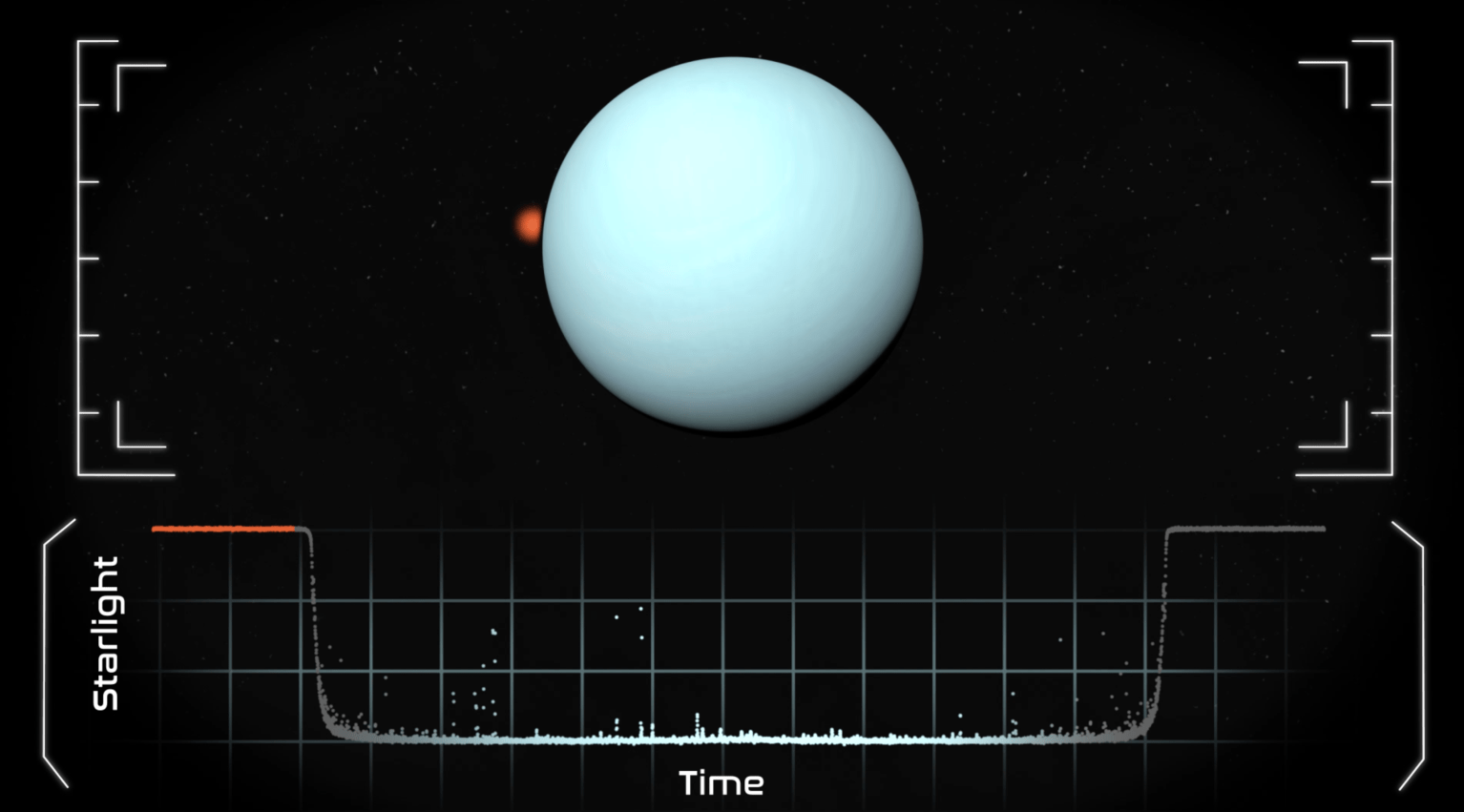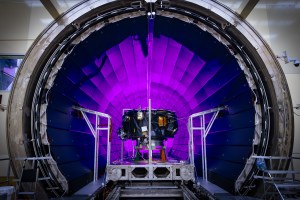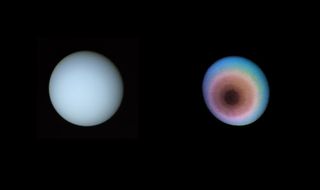5 Min Read Planetary Alignment Provides NASA Rare Opportunity to Study Uranus Artist's illustration showing a distant star going out of sight as it is eclipsed by Uranus – an event known as a planetary stellar occultation. Credits: NASA/Advanced Concepts Laboratory When a planet’s orbit brings it between Earth and a distant star, it’s more than just a cosmic game of hide and seek. It’s an opportunity for NASA to improve its understanding of that planet’s atmosphere and rings. Planetary scientists call it a stellar occultation and that’s exactly what…
Read MoreTag: Uranus
Have We Been to Uranus? We Asked a NASA Expert: Episode 56
2 min read Preparations for Next Moonwalk Simulations Underway (and Underwater) Have we ever been to Uranus? The answer is simple, yes, but only once. The Voyager II spacecraft flew by the planet Uranus back in 1986, during a golden era when the Voyager spacecraft explored all four giant planets of our solar system. It revealed an extreme world, a planet that had been bowled over onto its side by some extreme cataclysm early in the formation of the solar system. That means that its seasons and its magnetic field…
Read MoreHubble Helps Determine Uranus’ Rotation Rate with Unprecedented Precision
Explore Hubble Hubble Home Overview About Hubble The History of Hubble Hubble Timeline Why Have a Telescope in Space? Hubble by the Numbers At the Museum FAQs Impact & Benefits Hubble’s Impact & Benefits Science Impacts Cultural Impact Technology Benefits Impact on Human Spaceflight Astro Community Impacts Science Hubble Science Science Themes Science Highlights Science Behind Discoveries Hubble’s Partners in Science Universe Uncovered Explore the Night Sky Observatory Hubble Observatory Hubble Design Mission Operations Missions to Hubble Hubble vs Webb Team Hubble Team Career Aspirations Hubble Astronauts News Hubble News…
Read MoreA day on Uranus is actually longer than we thought, Hubble Telescope reveals
Uranus just got a little more time on its hands. A fresh analysis of a decade’s worth of Hubble Space Telescope observations shows Uranus takes 17 hours, 14 minutes and 52 seconds to complete a full rotation — that’s 28 seconds longer than the estimate provided by NASA’s Voyager 2 spacecraft nearly four decades ago. In January 1986, Voyager 2 became the first — and so far the only — spacecraft to explore Uranus, and with its data, astronomers pegged the ice giant’s rotation period at 17 hours, 14 minutes…
Read MoreSmall moon of Uranus may have once had a subsurface liquid water ocean
Over the last few decades, planetary scientists have been steadily adding to the list of moons in our solar system that may harbor interior oceans either currently or at some point in their past. For the most part, these moons (such as Europa or Enceladus) have been gravitationally bound to the gas giants Jupiter or Saturn. Recently, though, planetary scientists have been turning their attention further afield, towards the ice giant Uranus, the coldest planet in the solar system. And now, new research based on images taken by the Voyager…
Read More‘Traffic jams’ around Uranus could solve the mystery of its weak radiation belts
Scientists may have solved a lingering mystery surrounding the ice giant Uranus and its weak radiation belts. It’s possible the belts’ weakness is linked to the planet’s curiously tilted and lopsided magnetic field; the field could be causing “traffic jams” for particles whipping around the world. The mystery dates back to Voyager 2’s visit to Uranus in January 1986, far before the probe left the solar system in 2018. The spacecraft found that Uranus‘ magnetic field is asymmetric and tilted roughly 60° away from its spin axis. Additionally, Voyager 2…
Read More3 tiny new moons found around Uranus and Neptune — and one is exceptionally tiny
Astronomers have discovered two tiny moons orbiting Neptune and one circling Uranus, bringing the number of their known moons to 16 and 28 respectively. Uranus’ new moon, the first detected around the ice giant in over two decades and possibly the smallest of its ilk, is just 5 miles (8 kilometers) wide; it takes 680 days to complete one orbit around Uranus. In comparison, one Mars’ moons named Deimos, considered to be among the tiniest known moons in our solar system, is 8 miles (13 km) wide. The new moon…
Read MoreRinging in the Holidays
NASA, ESA, CSA, STScI The ice giant Uranus and its rings steal the show in this Dec. 18, 2023, image from the James Webb Space Telescope. The telescope captured new images of Uranus, revealing detailed features of the planet’s rings and seasonal north polar cap, as well as bright storms near and below the southern border of the cap. This Webb image also shows 14 of the planet’s 27 moons: Oberon, Titania, Umbriel, Juliet, Perdita, Rosalind, Puck, Belinda, Desdemona, Cressida, Ariel, Miranda, Bianca, and Portia. Webb’s extreme sensitivity also picks…
Read MoreThe rings of Uranus look positively festive in epic James Webb Space Telescope holiday photo
They may not be the gold rings from “The Twelve Days of Christmas,” but Uranus and its rings stand resplendent in this stunning portrait from the James Webb Space Telescope (JWST). It’s the second image of Uranus that the JWST has captured this year. The first, released in April, was a two-toned affair composed of imagery captured at infrared wavelengths of 1.4 and 3.0 microns. This new image adds extra wavelengths, specifically 2.1 and 4.6 microns, to give a much more complete overview of the seventh planet from the sun. …
Read MoreUnwrapping Uranus and its icy secrets: What NASA would learn from a mission to a wild world
Uranus, the seventh planet from the Sun, orbits in the outer solar system, about two billion miles (3.2 billion kilometers) from Earth. It is an enormous world – quadruple the diameter of Earth, with 15 times the mass and 63 times the volume. Unvisited by spacecraft for more than 35 years, Uranus inhabits one of the least explored regions of our solar system. Although scientists have learned some things about it from telescopic observations and theoretical work since the Voyager 2 flyby in 1986, the planet remains an enigma. It’s…
Read More




